|
September 2010 Bristol Blenheim IVF, Tracked Rapier
|
|
|
September 2010 Bristol Blenheim IVF, Tracked Rapier
|
|
![]()
100 years ago this month: On 24 September 1910, Bristol Boxkite aircraft took part in the Army's autumn manoevres on Salisbury Plain, becoming the first British use of aircraft for military observation and the first British example of air-to-ground wireless transmission.
70 Years ago this month. At exactly 1159am on 25th September 1940, a massive German bombing raid targetted the Bristol Aircraft Factory in Filton, the first extensive raid outside of the South East. Roughly 350 bombs were dropped, but since false alarms had been common many people were not prepared; many were caught in the streets as they strolled to the shelters. Of the 131 who died, 92 were Bristol Aircraft Company (BAC) employees.
2010 - 100 Years of the Bristol Aircraft Company
![]() This
Month's selected
WW2 70th Anniversaries:
This
Month's selected
WW2 70th Anniversaries:
The Battle of Britain
7 Sept 1940 - The Luftwaffe shifts its focus from the RAF's airfields, to London and the major cities. 400 bombers attack the east end of London in daylight, with 600 fighters in attendance. beginning 57 consecutive nights of strategic bombing. The RAF is at its lowest ebb. At the end of August and beginning of September, it is losing over 120 pilots (killed or wounded) each week, but the Luftwaffe is losing more and the shift to raids on cities allows Fighter Command the respite it needs to turn the battle decisively in its favour.
15 Sept - (now commemorated as Battle of Britain Day) Two massive waves of German attacks are completely repulsed by Fighter Command. 11 Group's "big wing" tactics finally prove their worth; with every available RAF fighter in the air, 60 German aircraft are destroyed for the loss of 26 RAF fighters.
16 Sep - US President Roosevelt signs into law the first peacetime draft in US history.
17 Sep - Adolf Hitler orders Operation Sealion to be postponed. There will be no invasion of Britain. RAF Fighter Command has won the Battle of Britain and has ended the combat phase far larger and stronger than it began; Nazi Germany has suffered its first major defeat; the Luftwaffe has lost 5 of its own men for every British airman killed.
Hitler orders night raids against British Cities, hoping to bomb Britain into submission; During this first phase of "the Blitz", between July and September 1940, 23,000 British civilian die in air raids, with more than 32,000 injured.
23 Sep - Operation Menace - A Royal Navy Task Force, led by Aircraft Carrier HMS ARK ROYAL, attacks the VIchy French port of Dakar, hoping to establish it as a base for the Free French under DeGaulle. After 2 days of bombing, the Vichy French will not back down and Churchill orders the mission to be terminated. French bombers attack Gibraltar in retaliation, but cause little damage.
25 Sep - Major daylight bombing raid on Bristol Aircraft Company at Filton, Bristol, resulting in an acceleration of the factory dispersal programme, including the shadow underground factory at Corsham
27
Sep - Germany, Italy and Japan sign the Tripartite Act, creating the
Axis of Powers. Membership is also
offered to the Soviet Union, which agrees in principle, but details
of the annexation of Finland prove a sticking point. Unbeknown to the
Soviets, planning for Operation Barbarossa, the massive Axis
offensive against Russia, have already begun.
Bristol Blenheim Mk. IVF - 254 Squadron, Coastal Command
RAF Stradishall, Battle of Britain, September 1940
Airfix 1/72 - "Fljuga vakta ok Ijosta" ("to fly, to watch, and to strike")
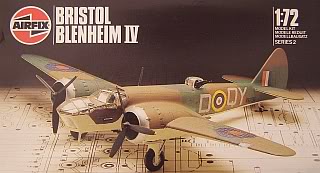
This one took rather longer to build than I expected, and although the Airfix box and instructions advertise it as belonging to 235 Sqn, who participated directly in the Battle of Britain, the QY code shows it to actually belong to 254 Sqn, who were also operational with Fighter Command during the battle, but operated largely over the North Sea and Norway.
|
Aircraft of RAF Coastal Command also played a part in the Battle of Britain, with Blenheim Fighters providing fighter cover for shipping in coastal areas, as well as flying guard for Air-Sea Rescue missions to recover downed RAF pilots. When it first entered service, the Blenheim bomber was a highly advanced aircraft, whose performance exceeded that of many contemporary fighters. However, by 1940 it had been outpaced and the many RAF Blenheim squadrons suffered badly during the Battle of France. Nevertheless, the dire situation in the summer of 1940 led to a number of RAF Coastal Command squadrons being equipped with a fighter conversion of the Blenheim and then being attached to Fighter Command. Although commissioned at RAF Stradishall in Suffolk early in 1940, 254 Sqn moved to RAF Hatston in Orkney and then RAF Sumburgh in Shetland, from where it operated over Norway on anti shipping and fighter sweeps. In May 1940, 4 Blenheims were transferred south to RAF Detling to cover the Dunkirk evacuations, with other elements of the Squadron regularly operating out of Stradishall and North Coates. Although not officially credited with participation in the Battle of Britain, the wider war did not stop between May and October 1940; along with much of the rest of the RAF, 254 Squadron's Blenheims were constantly busy and active throughout that period, representing the ongoing effort that continued throughout the difficult and critical days of the summer of 1940. |
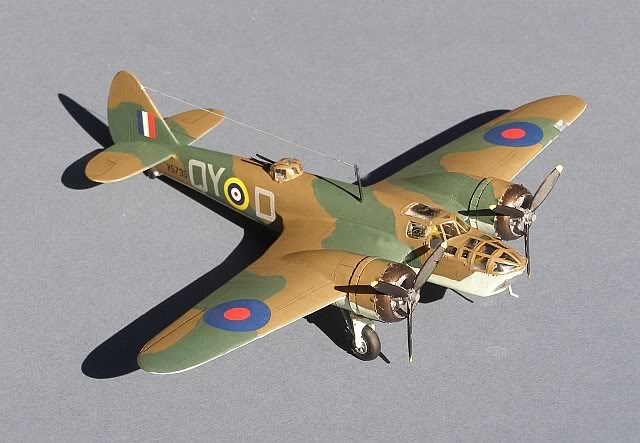
The kit was assembled largely out of the box, although I did do a little additional detailing of the cockpit area. You can't see any of this once the canopy is attached!
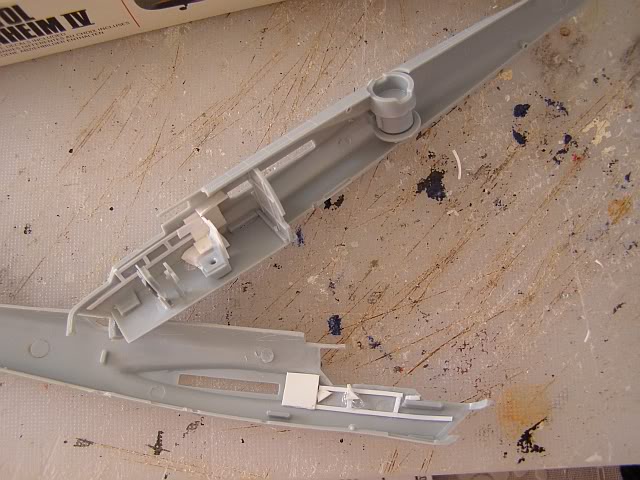
The Airfix Blenheim is a fairly old mould (first issued in 1968), but it has held up well, and although definitely not up to modern standards, it is a reasonable build.
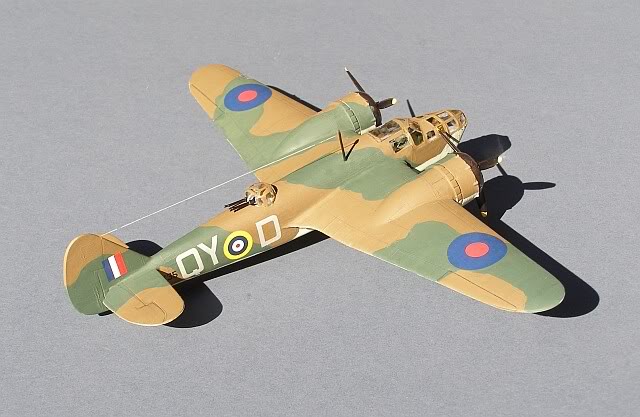
l removed most of the prominent rivets then re-applied many of the panel lines with fine pencil, which gives the whole kit a more modern look. Decals are out the box and went on well, although the roundels were badly out of register and replaced with some from the spares box. The roundel red also looks too bright for me, although this is not obvious in the photos
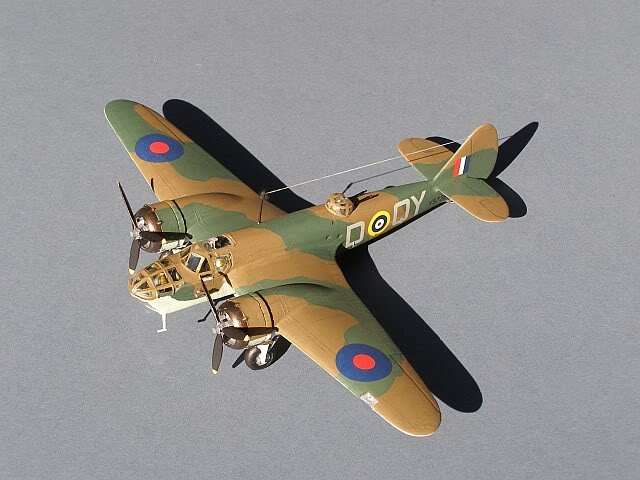
The only difficult area is the undercarriage, which is a complex and weak assembly, intended to move once built. Mine doesn't!
Neither does my turret (although it did until the final coat of paint).
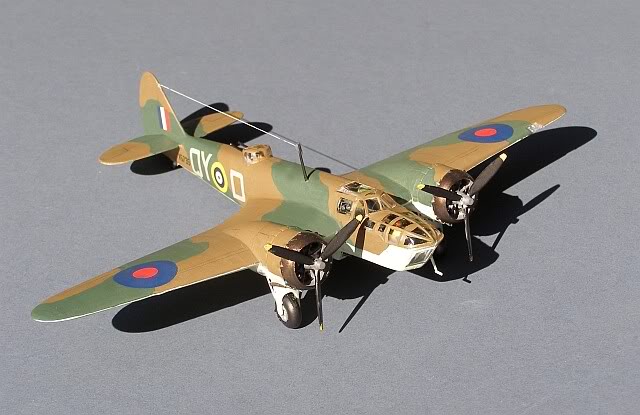
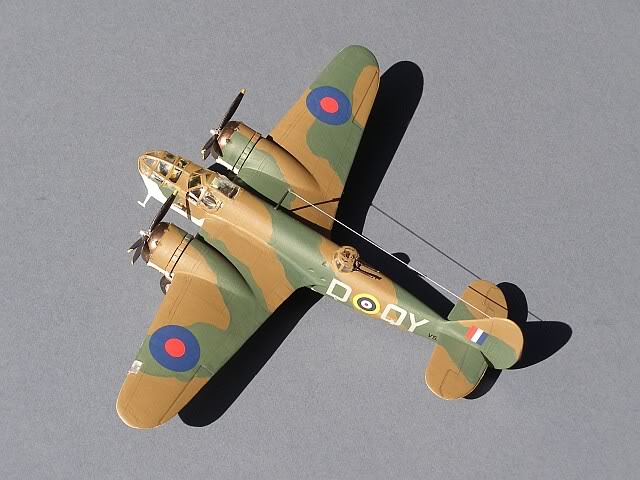
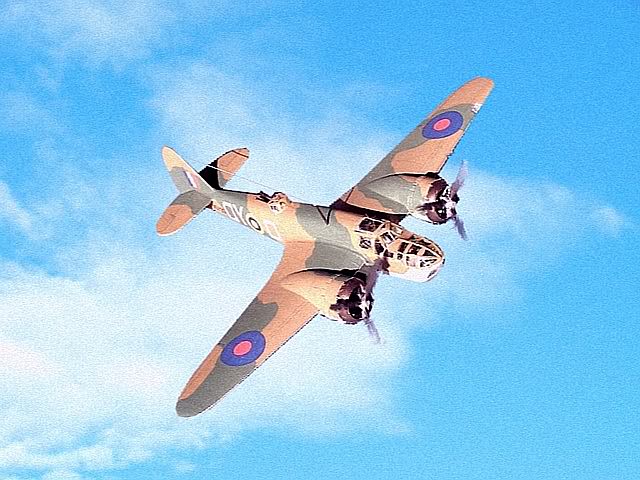
Other Battle of Britain-era aircraft on my website (click on the thumbnails to learn more):
Link to more RAF Aircraft on my Friends & Allies Pages
British Aerospace Dynamics Tracked Rapier
11 (Sphinx) Air Defence Battery, 22 Air Defence Regiment, Royal Artillery 1982-83
Napier Barracks, Dortmund.
Cromwell Models 1/72
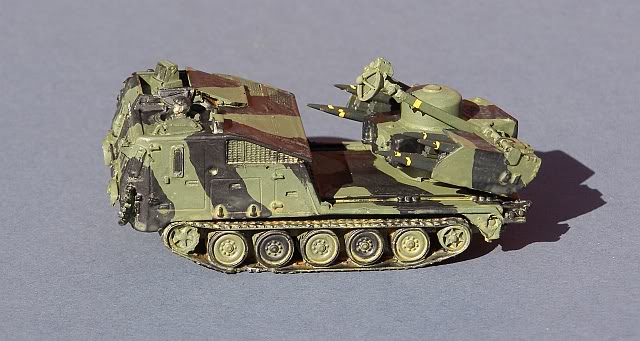
To finish the month, something completely different. I have built several Cromwell Models resin AFVs now, and I continue to be really impressed by their quality and comparatively low price. Availability is an issue though, and I have now almost got to the point where I buy them whenever I see them. This one came from the Avon IPMS show at Yate last month, for the princely sum of £7. Bargain!. To be honest it looked like a random jumble of broken resin in a plastic bag (some of its 27 parts had indeed snapped), so purchasing it was a leap of faith, but I think that the end result speaks for itself. As is usual, Cromwell don't supply any instructions, so a good set of reference photos are required!
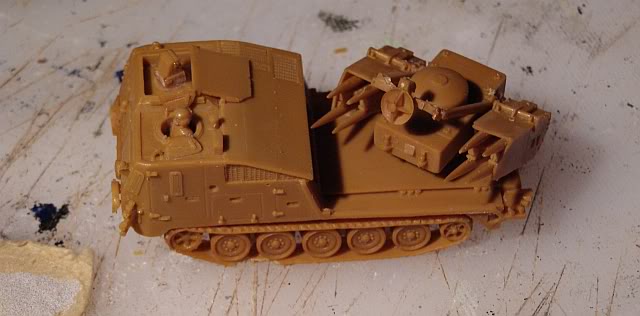
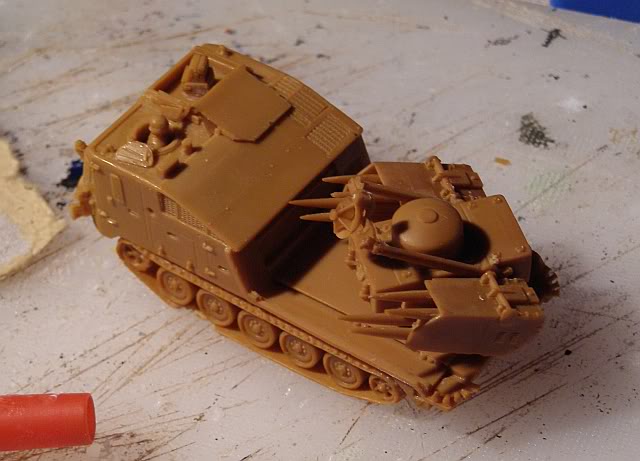
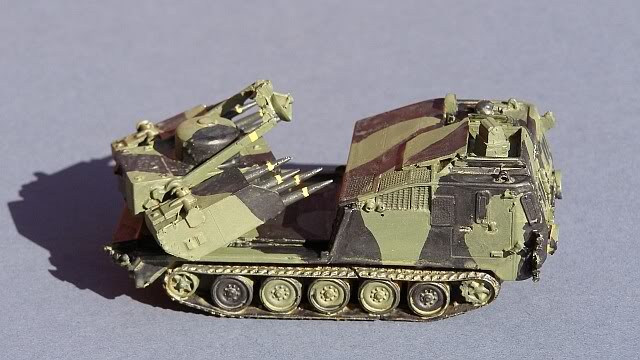
Tracked Rapier was originally developed in the late 1970s for the Shah of Iran, but adopted by the British Army following the Iranian Revolution. Unlike the more common towed Rapier, this version can be ready to fire within 30 seconds of stopping, making it an ideal air defence companion for fast advancing heavy armour. It was retired from British service at the end of the Cold War, but then several units were re-instated for the first Gulf War. The launcher and its support systems sit on an M548 tracked carrier, a variant of the ubiquitous M113 Armoured Personnel Carrier.
Although towed Rapier saw intense combat during the 1982 Falklands conflict, the tracked version has never (yet) been fired in anger.
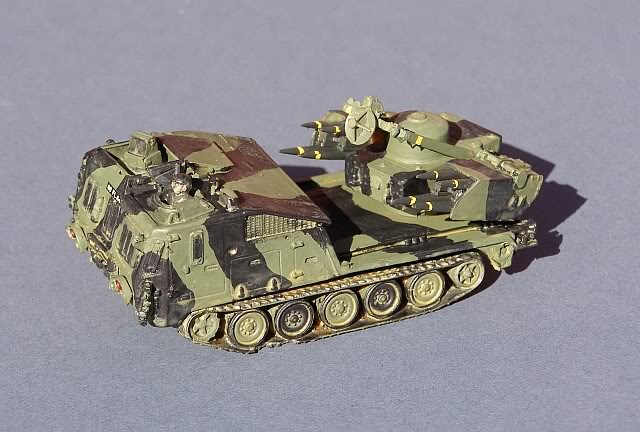
.... And the tenuous link to this year's modelling themes - 60 years ago this month, 11 (Sphinx) Air-Defence Battery were one of the first British Army units engaged in the Korean War. It soon became obvious that their Bofors anti-aircraft guns were equally effective against soft ground targets and there were several occasions when the guns were used in this role, including "A" Troop's participation in the Battle for the Imjin River, supporting 45 Field Regiment in the ground role.
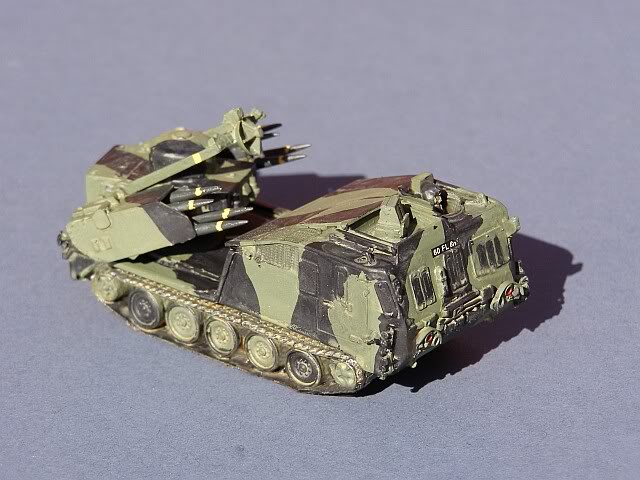
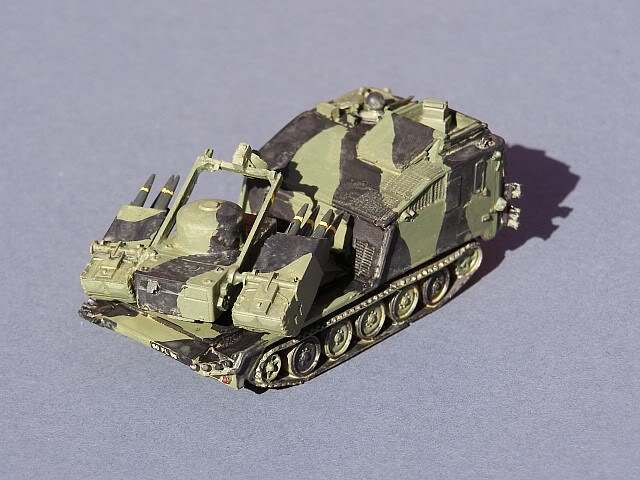
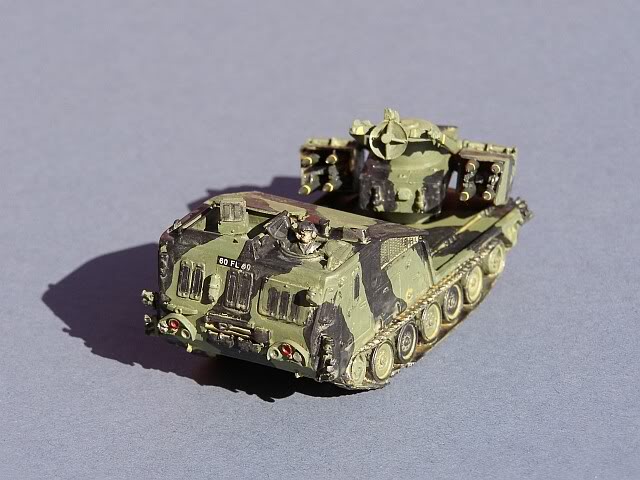
Links
to related pages on this Website: ![]()
![]()
www.gengriz.co.uk